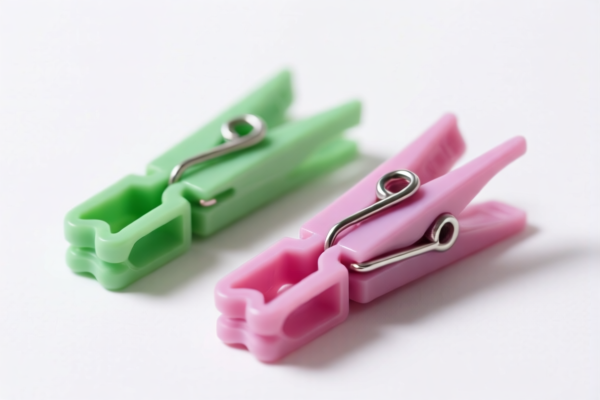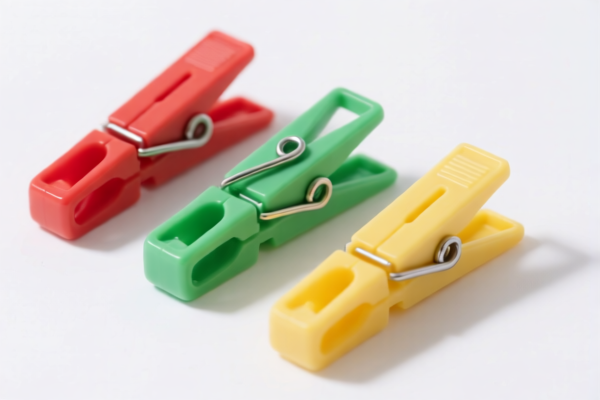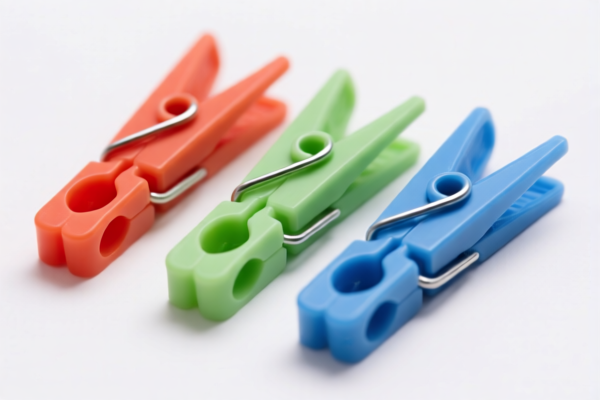| HS Code | Official Doc | Tariff Rate | Origin | Destination | Effective Date |
|---|---|---|---|---|---|
| 3926908500 | Doc | 44.0% | CN | US | 2025-05-12 |
| 3926909905 | Doc | 42.8% | CN | US | 2025-05-12 |
| 3923500000 | Doc | 60.3% | CN | US | 2025-05-12 |
| 9606104000 | Doc | 58.5% | CN | US | 2025-05-12 |
| 9606108000 | Doc | 57.7% | CN | US | 2025-05-12 |
| 9607190060 | Doc | 68.0% | CN | US | 2025-05-12 |
| 9607200080 | Doc | 66.5% | CN | US | 2025-05-12 |
| 8547200000 | Doc | 55.0% | CN | US | 2025-05-12 |
| 8546900000 | Doc | 55.0% | CN | US | 2025-05-12 |
| 8546900000 | Doc | 55.0% | CN | US | 2025-05-12 |




Plastic Snaps
Plastic snaps are a type of fastener used to temporarily or semi-permanently join two pieces of material together. They consist of two or more interlocking parts, typically made from thermoplastic polymers.
Material
The most common materials used in plastic snap production include:
- Polypropylene (PP): Offers good chemical resistance and affordability. Frequently used in clothing and general purpose applications.
- Polyacetal (POM): Known for its high strength, stiffness, and resistance to wear. Suitable for applications requiring durability.
- Nylon (Polyamide): Provides excellent strength, flexibility, and resistance to abrasion. Common in heavy-duty applications like outdoor gear.
- ABS (Acrylonitrile Butadiene Styrene): Offers a balance of strength, rigidity, and impact resistance. Used in applications requiring a harder plastic.
Purpose
Plastic snaps serve as a convenient and often reusable alternative to buttons, zippers, or other more permanent fasteners. They are valued for their ease of application and removal, making them ideal for applications where frequent adjustments or disassembly are needed.
Function
A plastic snap functions by creating a secure connection through the interlocking of two or more components. The typical snap consists of:
- Cap: The visible portion that interlocks with the socket.
- Socket: Receives the cap to create the closure.
- Post: Extends from the cap and secures it within the socket.
- Washers (Optional): Used to distribute pressure and reinforce the connection.
The cap and socket are pressed together, causing the post to latch into a corresponding opening within the socket, forming a secure bond.
Usage Scenarios
Plastic snaps are employed in a wide range of applications, including:
- Clothing: Securing closures on shirts, jackets, pants, and other garments.
- Bags and Purses: Closing handbags, backpacks, and tote bags.
- Baby Products: Fastening diapers, clothing, and accessories.
- Upholstery: Securing cushions, covers, and other fabric elements.
- Crafts and DIY Projects: Providing closures for handmade items.
- Automotive: Securing interior panels and trim.
- Packaging: Sealing containers and boxes.
Common Types
Several types of plastic snaps are available, each suited to specific applications:
- Standard Snaps: The most common type, featuring a simple cap and socket design.
- Heavy-Duty Snaps: Constructed from stronger materials for increased durability.
- Long Post Snaps: Designed for thicker materials.
- Invisible Snaps: Concealed within the fabric for a cleaner appearance.
- Metal-Prong Snaps: Feature metal prongs for a more secure hold, often used in upholstery.
- Self-Closing Snaps: Automatically close upon contact, often used in medical or safety applications.
- Poppers: A type of snap fastener, commonly used in jeans and casual wear.
Plastic snaps fall under several potential classifications depending on their specific characteristics and use. Here's a breakdown of relevant HS codes based on the provided information:
-
9606.10.40.00: This HS code covers buttons, press-fasteners, snap-fasteners and press-studs, button molds and other parts of these articles; button blanks, specifically Press-fasteners, snap-fasteners and press-studs and parts thereof valued not over 20¢ per dozen pieces or parts. The tariff is comprised of a 3.5% basic tariff, a 25.0% additional tariff, and a 30.0% additional tariff effective after April 2, 2025, resulting in a total tariff of 58.5%.
-
9606.10.80.00: This HS code also covers buttons, press-fasteners, snap-fasteners and press-studs, button molds and other parts of these articles; button blanks, specifically Press-fasteners, snap-fasteners and press-studs and parts thereof valued over 20¢ per dozen pieces or parts. The tariff is comprised of a 2.7% basic tariff, a 25.0% additional tariff, and a 30.0% additional tariff effective after April 2, 2025, resulting in a total tariff of 57.7%. The valuation is a key factor in determining the correct HS code within this category.
-
3926.90.85.00: This HS code covers Other articles of plastics and articles of other materials of headings 3901 to 3914: Other: Fasteners, in clips suitable for use in a mechanical attaching device. The tariff is comprised of a 6.5% basic tariff, a 7.5% additional tariff, and a 30.0% additional tariff effective after April 2, 2025, resulting in a total tariff of 44.0%. This code applies if the snaps are considered fasteners in clips.
-
3926.90.99.05: This HS code covers Other articles of plastics and articles of other materials of headings 3901 to 3914: Other: Other Elastic bands made wholly of plastics. The tariff is comprised of a 5.3% basic tariff, a 7.5% additional tariff, and a 30.0% additional tariff effective after April 2, 2025, resulting in a total tariff of 42.8%. This code applies if the snaps are made wholly of plastics and are considered elastic bands.
It is important to determine the precise composition, valuation, and intended use of the plastic snaps to select the most accurate HS code.
Customer Reviews
No reviews yet.